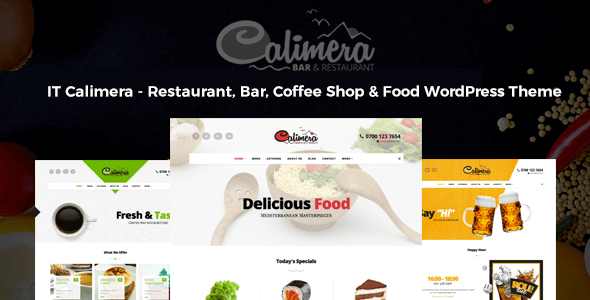Why redesign a website? What is the lifespan of a business website?
Why redesign a website that is in perfectly good working order, delivering conversions, engaging customers and acting as the perfect brand messenger for your business? The answer is, if it’s doing all those things effectively, then maybe you shouldn’t.
But whilst your business website might have been built to be robust, it does not necessarily follow that it was built to last. The web is a rapidly moving place, and the pace of change is only accelerating. Which means that sooner or later, it will be more than necessary to redesign your website, taking all those changes into account.
Opinions on the right time to undertake the complex, time-consuming activity of redesigning a website vary, from every few years to every few months. According to one reliable source, the average lifespan of a website before major redesign is around ½ years.
Whilst this may be accurate for some businesses, the answer for most organisations is that your business website will last until it is no longer effective – and it will be no longer effective when customers, technology and business strategies change.
Redesign does not mean rebrand
Keeping pace with change does not mean throwing the baby out with the bath water. Regular content updates, such as blogs, new product details, images or graphical additions, can be vital components in maintaining website effectiveness.

Even when the time comes to redesign business websites, a complete overhaul of every single design element is not usually required. More often, modifications that help your website work better and are aligned to your marketing goals are the changes that deliver results.
At the same time, a redesign is not just about reworking your website’s “look and feel”. The desire for modern, up-to-date websites, with the view of attracting new customers and wowing visitors, needs to be balanced with the fact that many consumers just hate change.
Feedback on redesigns regularly reports that, although consumers are happy to change the way they buy and adopt new technologies quickly, they don’t like it when a familiar website changes too much, even when the new design is better than the original.
An effective redesign comes from a more in-depth understanding of why the existing site is no longer delivering to KPIs. If a website is no longer an effective lead generation tool, then it is worth taking the time to consider how visitors have changed, how technology has changed and how your business has changed too. This article explores those three components of change, to help you answer why you should engage in redesigning a website, and when might be the right time to do it.
1. Change in Customer Expectations
First impressions count. The first impression most visitors have of your business comes almost exclusively from your website. Perhaps the most important factor for influencing your decision to redesign a website, is the change in customer expectations that have taken place in recent years.

Although consumers are naturally conservative and view major redesigns with suspicion, the way visitors relate to your business and website has not remained static. Consumers can be highly impatient with sites that are non-responsive, slow to load and lack relevant easy-to-navigate content.
Decline in Search Traffic and Conversion Rate
Visitor expectations keep increasing, so unless your website keeps improving, conversion rates tend to decline. User experience (UX) is a newer discipline of website design that is become increasingly crucial to a website’s effectiveness. UX focusses on the emotional experience your visitor has when navigating through your website and how it aligns with their intentions. A site that is tough to navigate, has slow load times, or is unnecessarily complex can leave a bad taste in your visitor’s mouth and cost you valuable leads.
According to eConsultancy, 88% of online consumers are less likely to return to a site that has a bad user experience. A redesign can reverse the ageing process through a new, conversion optimised design that exceeds visitors expectations.
Are you aligned to your Buyer Personas?
Is your website is still providing the information your buyer personas are looking for? If it doesn’t look appealing, load quickly or even have a mobile version, customers are going to keep walking.
Your website is a key player in your sales team. It works around the clock to create a positive impression for visitors and deliver current prospects the vital information they need. That’s why it’s important to tailor your website to the specific buyer journey of your personas.
A well-thought-out user journey takes into account your buyer’s intentions and demands, and will keep them moving through your sales funnel.
Web design standards change
Keeping up with modern design trends may not seem to be a business reason for redesigning a website, but it can have a major impact on traffic and the resulting conversion rate. Design standards on the web have always been a mix of what you can do within technical limitations, and what’s in fashion. As technical design constraints are lifted, thanks to innovations such as Google Webfonts, sites that are still using previous design elements suddenly look very dated.
Like all things, web design elements go in and out of style. Whilst most visitors could not name which design elements on your website are out of fashion and which are on trend, we all instinctively know when a site looks dated and is in need of redesigning.
How soon is now?
It is critical not to underestimate the importance of speed. According to online eCommerce giants, Shopify, in 1999 the average user was willing to wait eight seconds for a page to load. By 2010, 57% of online shoppers said they would abandon a page after three seconds.
Since then, the expectations have increased. In 2015, 58% of mobile users say they expect their mobile website to load almost as fast to even faster than the experience they get on their desktop browser.
A fast site is one that delivers a good user experience. A satisfying user experience leads to higher conversions. The speed at which your business website loads is critical, but is often overlooked in favour of more tangible design elements.
Visitor preference has dictated that content is becoming increasingly visual. As a result, the faster and more immersive your website, the more likely you are to deliver what to your visitors’ expectations, and the more likely they are to stay on your site and convert.
Redesigning a website with faster load speeds in mind, amplifies visitor engagement and retention, helps you connect better with prospects and increases the likelihood of converting them into buyers. Customers and consumers are no longer willing to wait for your valuable content. If you don’t have the lightning-quick speed they want, they’ll go somewhere else.
What are your competitors doing?
When your visitors do go somewhere else, most likely it is straight to your competitors. Keeping a close view of what competitors are doing with their websites, allows you to learn from both their successes and failures. Sometimes analysing competitor websites means catching up with someone who is ahead of the curve; other times, it allows you to differentiate yourself from them, staking your place as an innovator in your sector.

There are numerous free and paid tools that allow you to analyse competitors website information. But the goal of any analysis is to discover opportunities to improve your own website. Having an objective sense of a competitor’s strengths and weaknesses can help you tease out the causes and decide whether your website is a “me too” site, following the crowd, or whether it is delivering a truly innovative customer focused experience.
2. Changes in Technology
The second reason to consider redesigning a website is the continued advances in technology. Technology is continuing to change the way we view digital marketing. As customers spend more time on mobiles, tablets and laptops, the challenge for businesses is to be able to connect with them through all these devices, in real time, and to create campaigns that work across multiple platforms, to deliver higher conversion rates.
Mobile Responsive
The real-time conversations brands have with people as they interact with handheld devices and mobile apps have changed the nature of business communications. Responsive website designs are now a must for all digital marketing efforts, and the shift towards small-screen optimisation is continually evolving. Since responsive design has been around for a few years, any website that is not responsive not only looks old, but is actively ignoring half their potential audience.
Mobile responsive sites have particular design considerations too, which means making a site responsive will most likely entail a complete redesign of a website in the process.
Updated Content Management System
New technology innovations, such as the need for responsive websites, has meant that the majority of content management systems are frequently updated to improve usability. With any system, upgrade comes the opportunity to gain greater analytical feedback, higher conversion rates and a more consistent user experience.
In addition to this, businesses now have higher expectations for easier and speedier site updates. Making changes and updating the site with new content should be fast, free and easy to manage.
Redesign a Website for Conversion Opportunities
As the technology underpinning your website continues to progress, data, digital engineering and social analytics offer new opportunities for online conversions. Big Data and the Internet of Things both offer data sets that are highly valuable to your business marketing.
The third party tools for your site give you the ability to add new functionality and analytical options. Some of the popular tools include eCommerce plugins, scripts to embed social media feeds, and exit-intent popups. While these tools add value to your site, over time they can become outdated for today’s standards and end up doing more harm than good making a website redesign essential.
HubSpot suggests asking yourself these questions to determine if it’s time to redesign a business website:
How are third-party tools working?
Are they slowing down site speed?
Are there new-and-improved versions available?
Thanks to the ability to collect consumer information through your redesigned website, you can have the knowledge necessary to make changes to content, products and services, in order to improve the overall consumer and commercial experience.
3. Changes in Business
Change is the dominant fact of life in every business. It is almost certain that your business’s value proposition is not exactly the same as it was 3 years ago. In some, fast-moving sectors, your entire business model may have changed or developed since the last time you undertook the decision to redesign business websites. Brands and propositions are in constant evolution as businesses respond to consumer and technology change.
A Fourth Industrial Revolution?
Whether or not you believe we are in the middle of a Fourth Industrial Revolution, the speed of current digital change is disrupting almost every industry in every country. No single sector remains untouched, and no matter what business you are in, it is likely that your industry has evolved significantly over recent years.

As your competitors reposition their communication strategies in response to market changes, so your marketing and communications strategy will need to respond as well. The way people communicate your industry norms and talk about your business will almost certainly have changed since you last redesigned your website, which means new content, messaging and information delivery methods will need to be employed.
Marketing Evolution
Of all the industries the internet has changed, few have moved as rapidly, or drastically, as marketing. Digital technology has transformed how we communicate with each other, and how businesses communicate with their customers. Marketing strategies that have worked adequately for the last few years are quickly becoming outdated. Which is why it is important to know exactly what changes are happening right now, and how they are affecting you and your business.
Your business website is your communications cornerstone. Which means that to effectively market your business, your website content needs to be aligned to a marketing strategy that is current, comprehensive and effective.
Redesigning business websites to accommodate new marketing strategies. Your marketing team can then adjust their marketing mix accordingly, to adapt and succeed in this rapidly changing digital environment. The use of targeting, data analysis, video production and advances in mobile tech are now standard tools for any marketing campaigns, and up-to-date website infrastructures, that accommodate and promote such innovation, will have the advantage in their digital marketing efforts.
Conversion rate decline
The result of failing to deliver effective marketing in the new digital environment, is that essential KPIs, such as marketing and sales goals, aren’t achieved and conversion rates decline. It can be easy to forget that your business website exists to generate business, in one form or another. If conversion rates decline, it is a clear indicator that it’s time to redesign business websites.
Why redesign a website?
Whilst it is extremely important for any business to have an up-to-date, easy-to-use, responsive website, the primary reason to redevelop it’s online presence has to come from a sound business case, delivered with a clear understanding of how the rapid pace of technological change has affected your business and customers.
Many businesses understand the importance of a user-friendly site and can easily see the problems with their current one, but are still unsure about why to redesign a website and when to start the process.
By measuring a current site’s effectiveness and analysing your content against your value proposition, the technology available and the mindsets and expectations of your customers, you can gain a clear indication of whether the time is right for you to undertake a redesign.
Here’s a recap of our advice: a go-to checklist to consider as you make the decision to redesign your website.
Most website need to be redesigned every ½ years
‘Redesign’ does not mean ‘rebrand’ – updating functionality may deliver the improvements required
Know your customer – what do they expect from your website?
What performance data are you measuring your website against? Get clear on your KPIs to see where improvements can be made
Does your website meet modern website design standards?
Does your website load quickly?
Does your website match or exceed the standard of competitors’ websites?
Is your website mobile responsive?
Could the CMS be improved?
Can it take advantage of current and future conversion opportunities and marketing strategies?
Any one of these, on their own, can be enough to reduce search engine rankings, which will then lower conversion rates and affect ROI.
Your website is, in effect, a 24-hour salesperson. Sadly, there is no way to completely future-proof it. Changes continue to occur in business, in technology and in customer expectations. And when they do, there is often no substitute for a full website redesign or technology overhaul, to keep pace. But with the right partners in place and a sound business strategy underpinning you, a sound website redesign process can leave you with an effective, engaging and productive website.
































